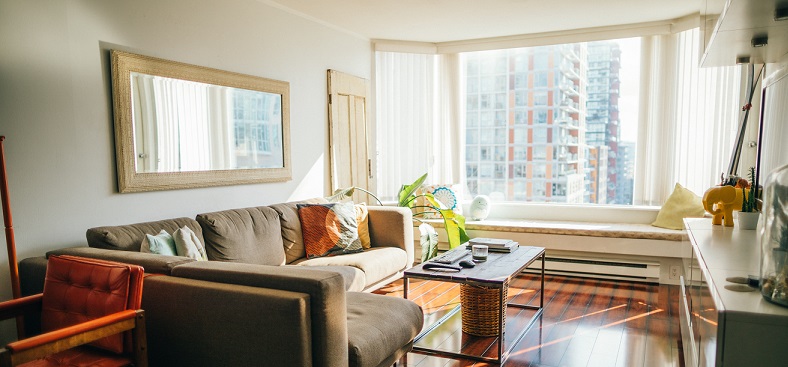
Private mortgage insurance, commonly known as PMI, is a specific type of insurance you might have to pay when you take out a mortgage. As a rule, a mortgage lender tacks on the policy, which comes from a private insurance firm, if a buyer doesn’t put at least 20% down on the purchase price. PMI also comes into play in refinancing. A homeowner whose equity is less than 20% of the home’s market value will likely be asked to pay for private mortgage insurance.
The rationale? When a home buyer has less than 20% of a home’s appraisal price to submit as a down payment, the loan-to-value (LTV) ratio is above 80%. Borrowers in this category are considered more likely than others to default on their mortgages.
So, like other kinds of mortgage insurance, PMI protects the bank, not the borrower. It’s meant to reimburse a lending institution if the borrower stops repaying the mortgage.
To Pay or Not to Pay?
The monthly cost of PMI will depend on your LTV ratio. Expect it to be between $30 and $70, says Freddie Mac, for every $100,000 you borrow.
To avoid this (it adds up!), many people delay home buying to save for a 20% down payment. That heftier down payment can have the added benefit of helping the buyer get a lower interest rate.
Other buyers might decide to accept PMI. It allows them to obtain a mortgage — and therefore a home — that they couldn’t get otherwise.
Now, you might be thinking, “Wait! Never buy a home until you can put 20% down!” But imagine you’re hoping to buy a small condo, priced at $150,000. You’ll need to place a $30,000 down payment on the condo to get to that 20% level and avoid PMI. You know you’ll have to set aside 1% to 2% in closing costs. You’ll need around $4,000 for closing cost fees, taxes and insurance; at least another $1,000 for furnishing and fixing up once you move in; and, if possible, $10,000 in cash reserves. Reasonably, you don’t see a way to put $30,000 down at this time.
Beyond basic cost calculations, something completely out of the blue could happen before closing. Your loan could fall through because someone sues the condo property. Then you might need a different underwriter to back your mortgage, and that underwriter may insist on PMI.
What will you do? Forget about the condo idea for now? Or should you just accept the PMI to put that condo within your reach?
“It All Depends…”

If you are currently renting an expensive apartment, or don’t have the option of renewing your lease, or you’re living with family or friends, it might be worth it to you to bite the bullet and pay the PMI. Maybe you’ve found a great deal on this condo, and interest rates overall are very low, and you believe it makes sense to invest in your own home now — so it’s worth it to pay $50 a month or so extra for PMI.
Maybe you reasonably do not want to put 20% down, because a big down payment will clear out your cash reserves when you buy — putting you at risk of financial failure if anything unexpected comes along in life. Even a condo property needs fixes that unit owners must cover, such as HVAC and major appliance replacements. And one we’re all keenly aware of since 2020? It may be unwise to take steady income for granted. For everyone, cash reserves are vital — and especially so for a new homeowner.
Moreover, if you do go ahead and accept the PMI to buy your new home, you can make extra payments on your mortgage principal to accelerate your rate of equity-building and lower your LTV ratio. Then, you’ll be in the position to have the PMI premium cancelled. If you’re on an FHA loan, you won’t be able to do that, but you can refinance later to a PMI-free, conventional loan.
In short, don’t assume you’re stuck with that PMI forever. Indeed, you should get it removed as soon as possible. Remember, PMI itself does nothing to protect you financially.
So, ultimately, to pay or not to pay PMI is a personal, fact-specific question. How much PMI will be you expected to pay? It makes a difference whether you have to pay an extra .1% of the mortgage or an extra 1%! Ask your mortgage specialist to go over the pricing with you to make a well-informed decision.
Possible Alternatives, and Pitfalls to Avoid
The closer to a 20% down payment you can get, the easier the terms of the PMI will be. But if you’re only short by a fairly small amount, you might have several options to avoid PMI entirely.
Are you a first-time home buyer? Then you may take up to $10,000 from your individual retirement account to put into your down payment without getting zapped by the early IRA withdrawal penalty. But look out! That counts as $10,000 more in taxable income you’re receiving in the year you buy a home. Take money out of your IRA, and your income taxes could (unpleasantly) surprise you.
Check your local and state government options, too. Some assist first-time buyers with low down payments avoid PMI, up to a specific income cap.
You might have heard of an option called lender-paid private mortgage insurance, or LPMI. This amounts to a lump-sum payoff at closing, or a hike in your mortgage interest rate with no option to cancel the tacked-on charge. So…there is no lender-paid lunch. Can you take the higher mortgage interest rate and refinance later? Ask your mortgage specialist.
And know the risks of accepting a PMI that has no cancellation provision once you get past your 80% LTV ratio. If you can’t cancel it later, you’ll have to refinance. And if you’re buying when rates are historically low, they could go up again in a few years’ time, making refinancing less attractive.
☛ Fine print: The PMI premium is tacked onto your monthly mortgage due. See your loan estimate when you apply for your loan, and your closing disclosure before you go into settlement. If you make a partial or total PMI payment up front, and later you sell or refinance the home, you might not be reimbursed for an advance premium.
Ask the Experts
An experienced local mortgage specialist is your best source of advice when it comes to suggesting money-saving moves. For a few examples, ask your mortgage representative about FHA-backed loans, VA loans, or, if you’re buying in a rural area, USDA loans. There might be one that’s more appealing to you than a conventional loan with PMI tacked on.
Alternatively, is your mortgage specialist able to suggest a bridge loan that could work for you? Some buyers apply for a home equity line of credit that doesn’t impose a penalty for early payoff. If this option is viable for you, it might be possible to put 20% down, getting your principal lower from day one.
Another good move is to check with a tax expert about the different financial outcomes of your current and future options — especially if you’re raiding that retirement account.
So, the Bottom Line on PMI?
Deciding whether to accept PMI is a personal financial matter, and highly fact-specific. In certain situations, accepting PMI is an excellent way to buy the right home. In other circumstances, better financial alternatives exist. Either way, the terms will depend on your financial profile, the home’s local market conditions, your loan underwriter’s preferences and rules, and how much time you have to deliberate.
Supporting References
Consumer Financial Protection Bureau Fact Sheet: What Is Private Mortgage Insurance?
And as linked. Photo credit: Wes Hicks and Micheile Henderson, via Unsplash.
